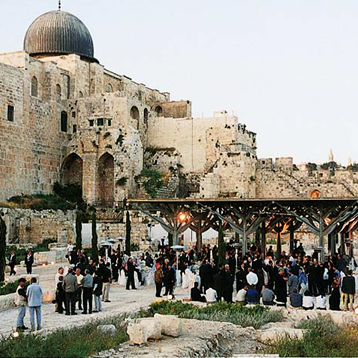Jerusalem Archaeological Park, Jerusalem, Israel
The Jerusalem Archaeological Park, Israel’s most important antiquity site, extends to the Temple Mount on the north, the slope of the Mount of Olives and the Kidron Valley on the east, and the Valley of Hinnom on the west and the south. This exceptional area, which has captivated the world’s imagination throughout history, has been designated as an archaeological park and open museum. The Park bears witness to events spanning some 5000 years, beginning with the Bronze Age and continuing through the days of the Israelite monarchy in the First Temple period. The splendors of the Second Temple and the impressive architecture of King Herod, dating to the second half of the first century B.C.E. are key elements in the park. Remains and monumental structures dating to the Christian and Muslim periods are also clearly visible.
Jerusalem’s Archeological Park provided the most ancient of the venues for the award ceremony of the Pritzker Architecture Prize on May 29, 2000. The event began with a reception on a landing at the top of the monumental staircase along the south wall of the Temple Mount. The presentation ceremony took place at Herodian Street, which was followed by dinner in the courtyard of Umayyad Palace. Participating in the ceremony were J. Carter Brown, Chair of the Jury, Ehud Olmert, Mayor of Jerusalem, Thomas J. Pritzker, President of the Hyatt Foundation, and the 2000 Laureate, Rem Koolhaas.
